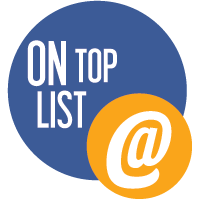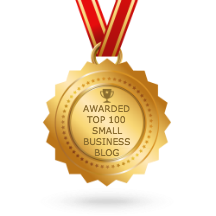
After a lot of time and effort, your Software as a Service (SaaS) company is seeing rapid growth. This may seem like a good thing, but there’s a caveat — rapid growth is not necessarily sustainable growth.
Like most driven business owners, you’ve probably had scaling on your mind since the very start. But if you don’t have a business strategy in place to ensure growth and sustainability to avoid the pitfalls, you could end up with increased revenue with increased demand, a need to scale, and pressure on your resources and internal processes that create bottlenecks and instability.
The key is balancing rapid growth and sustainable profitability with a revenue model that supports long-term stability.
Understanding the SaaS Growth-Profitability Tradeoff
SaaS businesses prioritize growth over immediate profitability, leveraging capital and aggressive customer acquisition strategies to bring in a flow of clients. But if you focus too much on growth without a path to profitability, you could create instability.
Unlike traditional businesses, SaaS companies often operate on a subscription-based revenue model that relies on long-term customer retention to offset upfront costs of acquisition, such as accounting software, HOA management software, and practice management software. This means you have to have strong unit economics to ensure that the revenue from customers exceeds the costs associated with acquiring and serving them.
This balance isn’t easy. It requires strategic financial planning and operational efficiency.
Key Strategies for Balancing Growth and Profitability
Optimize Customer Acquisition Cost (CAC) and Lifetime Value (LTV)
Focus on acquiring customers with a high LTV to CAC ratio. Ideally, you want a 3:1 or higher to ensure that every dollar spent on acquiring a customer offers a significant return on investment. You can use data-driven marketing to optimize customer acquisition and determine which campaigns and channels are the most effective.
Don’t forget about organic growth strategies! Referral programs, word-of-mouth marketing, and brand advocacy can help you reduce paid acquisition costs while boosting long-term trust and retention.
Improve Customer Retention and Reduce Churn
Early adoption is key to keeping cash flow and minimizing churn. First impressions matter, so streamline the user experience to ensure customers see immediate value during their onboarding and give them expectations for the rest of the experience.
Once you have a customer, provide exceptional customer support and proactive engagement. Check in with your customers and offer educational content that highlights the value of your service and ensures they’re maximizing its use. When you help customers achieve goals with your offerings, they’re more likely to explore other products and stay loyal when it comes time to resubscribe.
Consider Scalable Pricing Models
Many SaaS companies use tiered pricing to help customers access the functionalities they need without spending money on features they don’t. Designing your pricing strategy carefully can help you capture value from customers across the spectrum.
Usage-based pricing is another option that increases revenue scalability. Also known as pay-as-you-go or consumption-based pricing, this model ensures that your revenue scales in proportion to customer growth.
Keep Up with Unit Economics
Unit economics give you insights into the profitability of your business model based on a single unit, such as your product, service, or customer, to determine if you’re making money on each transaction. When you analyze unit economics, you can see where you may be losing money, better optimize your pricing and product strategies, and make informed decisions about growth and investment.
Regularly assess and adjust your pricing strategies to stay profitable. This can help you stay competitive while maximizing your revenue potential.
Focus on Lean Scaling
Lean scaling is a concept that centers around the customer, ongoing innovation, and efficient resource management with the principles of Lean Startup — building, measuring, and learning quickly.
There are multiple ways you can make your company leaner:
- Automate repetitive tasks to enhance productivity while reducing costs, such as workflow automation
- Invest in cloud infrastructure that scales efficiently with demand, which can also help as usage grows
- Implement agile development methodologies to enhance product iteration and ensure a flexible approach that evolves along with customer needs — leading to better satisfaction
Diversify Revenue Streams
Part of scaling is often adding new revenue streams. Expand your offerings with value-added services like premium features, professional services, or new integrations. This not only increases revenue but deepens customer engagement with your product.
Strategic alliances may be an asset. Explore partnerships and affiliate programs that can expand your revenue opportunities in new markets or customer segments.
Secure Sustainable Funding
If you need more capital to scale, make sure you’re balancing your funding sources with sustainable growth to maintain company control. Capital can accelerate growth, but if you rely too heavily on it, you can dilute your ownership and decision-making power.
In some cases, breakeven strategies may reduce your dependence on external funding sources. You can aim for profitability sooner rather than later without worrying about sacrificing equity.
Analyze Key Metrics and KPIs
You can’t plan without financial visibility. Make sure you track and analyze your key performance indicators (KPIs) to gain insights into financial health, customer engagement, and operational efficiency. Some of the KPIs to consider include:
- Customer acquisition cost (CAC): The total cost of acquiring a new customer
- Monthly recurring revenue (MRR) and annual recurring revenue (ARR): These two KPIs indicate steady income growth and business stability
- Customer lifetime value (LTV): The projected revenue a customer will generate over their lifetime with the company
- Churn rate: The percentage of customers who leave within a given period. Lower churn indicates strong customer retention.
- Gross and net revenue retention: Measures how much revenue is retained from existing customers, factoring in expansions, contractions, and churn.
- Burn rate and runway: The rate at which you’re spending your available cash and how long you can sustain operations without additional funding.
- Conversion rates: The effectiveness of marketing and sales efforts in turning prospects into paying customers.
Strike the Right Balance
Achieving a balance between growth and profitability in SaaS companies requires a disciplined approach to customer acquisition, retention, financial management, pricing, and operational efficiency. If you chase rapid expansion without a plan for sustainability, your company may suffer, but these strategies can help you scale sustainability.
Author Bio Below:

Michael Bollinger, a Lexington, Kentucky-based entrepreneur, has left a lasting mark on the tech and software landscape. As the founder of LegFi and File990, Michael launched PayHOA.com in 2018 after Togetherwork acquired his first two ventures.
PayHOA is an affordable community management software for homeowner associations that streamlines payments, communication, and vendor management. Beyond his entrepreneurial pursuits, Michael finds fulfillment as a devoted husband and a loving father to his three children.






